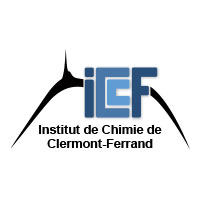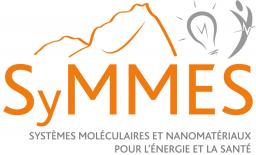
Polymer solar cells (PSC) are promising technologies for production of photovoltaic solar energy at low cost.
Thanks to their flexibility, semi-transparency and color tuning PSCs are only interesting for building integrated
photovoltaic (BIPV), but also unique energy provider for indoor and consumer electronics. Companies such as ARMOR
start to enter first products into theses markets now. Power conversion efficiencies (PCE) of PSCs over 16% were
demonstrated in 2019 at lab scale, but only around 5% are reached at module level by industrial processes limiting
their potential for products. In contrast, Perovskites based technologies, only recently discovered, show
efficiencies over 20% nowadays at lab scale indicating their higher potential for PV applications. The compatibility
with low cost production such as printing and low temperature processes makes this technique not only a direct
concurrent technology to PSC but to other traditional PV technologies. However, there are still open questions
about device stability, reproducibility, and the replacement of toxic materials restricting of the use of Perovskite in
industrial applications. Compared to Perovskite solar cells, PSCs have important advantages for PV products today.
Stability of polymer modules has been studied over years by academics and industry proofing stable performance over
at least 5 years. Furthermore toxicity tests of all printed polymer modules indicated the non-toxic character of
this technology. Therefore the major challenge for PSCs is now to increase power conversion efficiency in industrial
R2R production. Importantly, power conversion efficiency processing and stability of PSC is largely limited by the
use of fullerene derivatives as acceptors. During the last fours years, new non fullerene acceptors (NFAs) have been
developed increasing efficiency from NFA-based PSCs continuously from 6% beginning 2015 to 16% in 2019 attracting
highest interest in the OPV community. Concerning commercialization of PSCs, NFAs have also the potential to resolve
major sources of device instability issues related to fullerenes: thermal instability (strong fullerene diffusion in
BHJ tends to form micro-scale crystals after thermal annealing); photochemical dimerization (leading to "burn-in"
degradation); a very low resistance to oxidation leading to the formation of oxidized species acting as traps for
electrons.
The objectives of the NFA-15 project are A: demonstration of NFA based PSCs with
efficiency of 15% at lab scale,
i.e. inside the glovebox at 0.2 cm2. B: Transfer of lab processes to industrially relevant NFA PSC printing in
air with efficiency at module level of 10% (8-9% after burn-in). C: Selection of materials and device structures
to reach 7-10 years lifetime. The objective A needs to be addressed by combining novel NFA acceptors, use of ternary
and quaternary blend approaches with optimized device structures. For the industrial objective B, compatibility of
NFAs with non-toxic solvents, purity and reproducibility of NFA syntheses is in the focus, air processing with doctor
blading and thermal stability is addressed. Importantly, excellent thermal stability up to 100°C of NFA blend PSCs
was already demonstrated making NFAs promising for industrial processes. The objective 10-year lifetime (objective C)
will be addressed by combining NFAs with selected donor materials, suitable device structures and employing high
efficiency encapsulation provided by ARMOR.
Project labeled by the Capenergies competitiveness cluster

Résumé

Résumé
Ces dernières années les cellules solaires à base de polymères (PSCs) ont connu un regain d’intérêt par l’emploi d’accepteurs non fullerène (nommés « non-fullerene acceptors, NFAs » en anglais). Un gain spectaculaire des performances de 6% à 16% a été obtenu pour ces cellules NFA en 4 ans. Il a été démontré que la dissociation excitonique requiert ici des forces motrices faibles. Ceci démontre le fort potentiel des NFAs pour le développement des PSCs au niveau industriel. L’objectif du projet NFA-15 est de développer de nouvelles molécules NFA ainsi qu’une approche basée sur des mélanges ternaires pour atteindre des performances de 15% à l’échelle du laboratoire. De plus un transfert des procédés au niveau industriel sera réalisé pour obtenir par impression à l’air des modules avec une efficacité de 10%, soit 8-9% après stabilisation. Cette étape sera un pas crucial vers le déploiement industriel. Ces efforts seront combinés à des études de stabilité pour améliorer la robustesse des PSCS et atteindre des durées de vie de 7 à 10 ans.
Abstract
In recent years polymer-based solar cells (PSCs) have experienced renewed interest by the use of non-fullerene acceptors (NFAs). Indeed, unprecedented increase in power conversion efficiency from 6% to 16% within 4 years was obtained for these NFA cells. It has been shown that excitonic dissociation here requires weak driving forces. This demonstrates the strong potential of NFAs for the development of PSCs at the industrial level. The aim NFA-15 project is to develop new NFA molecules as well as an approach based on ternary mixtures to achieve 15% at the laboratory scale. Furthermore transfer of lab processes to industrially relevant NFA PSC printing in air with efficiency at module level of 10% (8-9% after burn-in) will be developed. This step will be a crucial step towards industrial deployment. All these efforts in increasing efficiency will be combined with stability studies to improve the robustness of PSCS and achieve lifetimes from 7 to 10 years.





